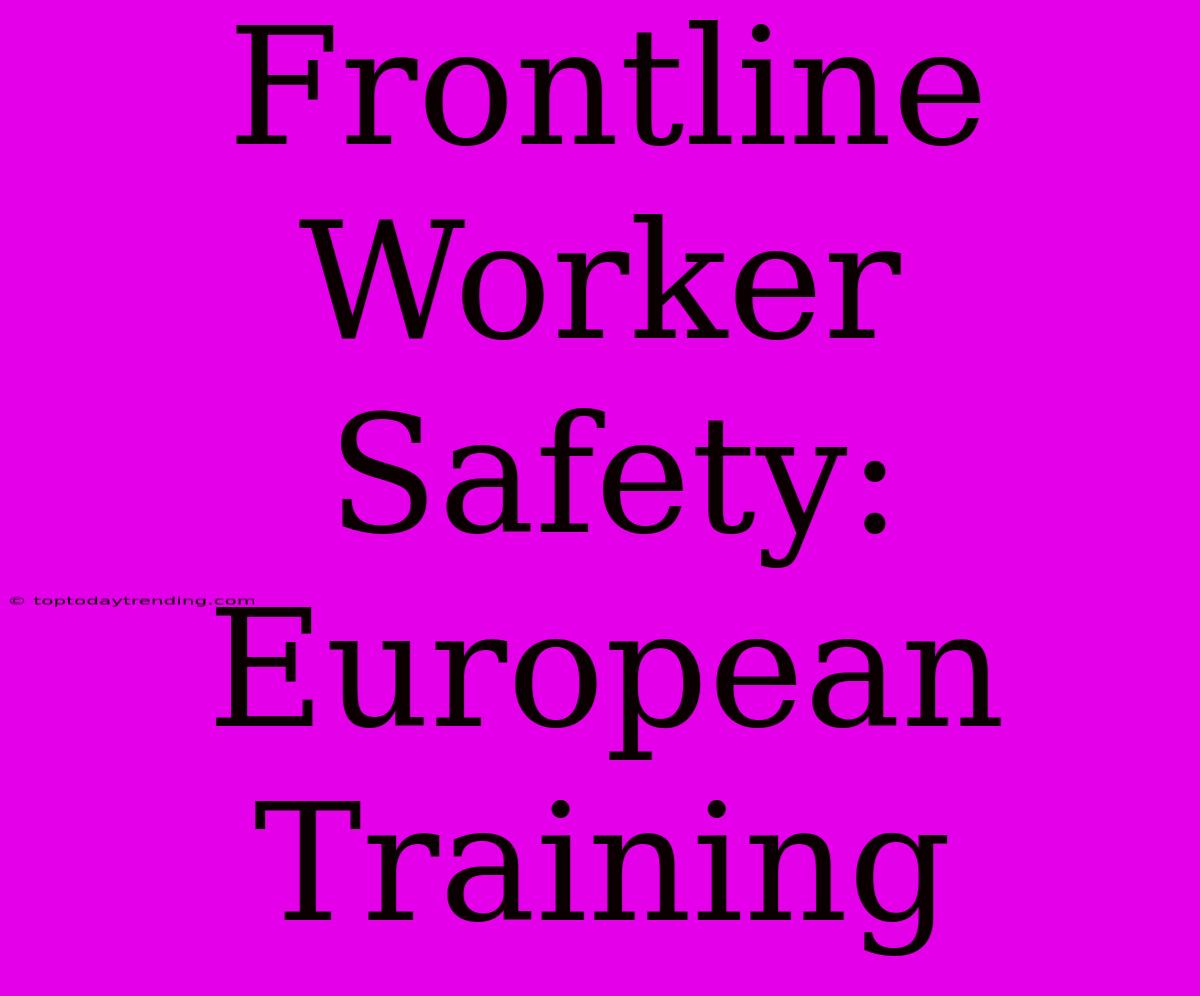Frontline Worker Safety: European Training
The COVID-19 pandemic highlighted the critical role of frontline workers in keeping societies functioning. From healthcare professionals to delivery drivers, these individuals faced significant risks to their health and safety. As we navigate a post-pandemic world, it's crucial to prioritize the well-being of these essential workers by implementing comprehensive safety training programs.
The Need for Training
Frontline workers often face various hazards, including:
- Exposure to infectious diseases: Healthcare workers, social care staff, and other frontline professionals are directly exposed to infectious agents, posing a constant threat to their health.
- Physical hazards: Construction workers, factory employees, and delivery drivers can be exposed to physical hazards such as heavy machinery, falling objects, or dangerous materials.
- Stress and burnout: The demanding nature of frontline work, coupled with the increased pressure during crises, can lead to stress, burnout, and mental health issues.
- Violence and aggression: Frontline workers in customer service, security, and emergency services are more susceptible to violence and aggression.
European Training Initiatives
Recognizing the importance of worker safety, European countries have implemented a range of training initiatives:
1. European Agency for Safety and Health at Work (EU-OSHA)
- OSHA's role: EU-OSHA provides guidance and resources on workplace safety and health, including training materials, best practices, and campaigns for raising awareness. They offer information specific to various sectors, including healthcare, construction, and transportation.
- Key resources: EU-OSHA's website features numerous resources on occupational safety and health, including:
- OSHwiki: A comprehensive knowledge base on occupational safety and health issues.
- Campaign materials: Informative campaigns and publications addressing specific workplace hazards.
- Training materials: Resources on training and education, including guidance on developing effective training programs.
2. National Training Programs:
- Country-specific programs: Each European country has its own national training programs for frontline workers. These programs vary in scope and focus, catering to the specific needs of each sector and country.
- Examples:
- United Kingdom: The Health and Safety Executive (HSE) provides training on a wide range of topics, including hazard identification, risk assessment, and emergency procedures.
- Germany: The Federal Institute for Occupational Safety and Health (BAuA) offers training courses on workplace safety and health, covering topics such as workplace ergonomics, stress management, and hazardous substances.
- France: The National Institute for Research and Safety (INRS) provides training on workplace safety and health, including specific programs for healthcare workers, construction workers, and transportation professionals.
3. Sector-Specific Training:
- Targeted training: Many sectors have specific training programs tailored to the unique hazards faced by their workers.
- Examples:
- Healthcare: Hospitals and healthcare facilities offer training on infection control, safe handling of medical devices, and patient safety.
- Construction: Training programs cover topics like scaffolding safety, fall protection, and the use of heavy machinery.
- Transportation: Training programs focus on safe driving practices, defensive driving techniques, and hazard awareness in different environments.
Key Elements of Effective Training:
- Practical and relevant: Training programs should be designed to meet the specific needs of frontline workers, focusing on the most common hazards they face.
- Interactive and engaging: Utilizing interactive learning methods like simulations, role-playing, and group discussions can enhance understanding and retention.
- Accessible and affordable: Training should be accessible to all frontline workers, regardless of their education level or language proficiency.
- Ongoing and updated: Regular refresher training and updates on new safety protocols are essential to maintain safety awareness and address emerging risks.
Conclusion
Frontline workers play a vital role in our society, and ensuring their safety is paramount. European training initiatives provide valuable resources and support to promote a safer working environment for these essential professionals. By investing in comprehensive training programs, we can empower frontline workers to navigate hazards, manage risks, and contribute to a healthier and safer society.

